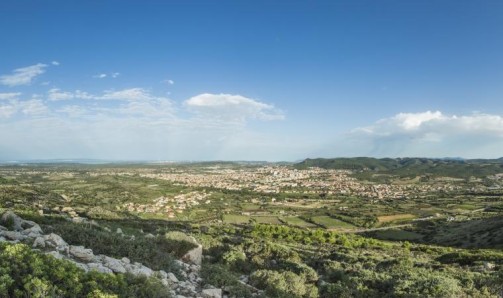San Giovanni Suergiu (Sardinian: Santu Giuanni Suèrgiu) is an Italian municipality of about 6,000 inhabitants in the province of Carbonia-Iglesias, in the Sulcis-Iglesiente region.
San Giovanni Suergiu is located about 70 km west of Cagliari and about 5 km south of Carbonia.
Morphologically, the territory is flat; in fact, the municipality is located in the plain that ends in the nearby Sant’Antioco lagoon.
The Sangiovannese territory was inhabited as early as the pre-Nuragic, Punic and Roman eras, as evidenced by various sites and artifacts found in the area.
In the first half of the twentieth century Palmas Suergiu was affected by rapid industrial development, which interrupted the agro-pastoral monoeconomy that had existed until then.
Thus was born the Santa Caterina power plant and the SAMIS coal refining and magnesium processing plants (transferred, however, to Sant’Antioco in the 1930s).
In addition to this, the construction of the Ferrovie Meridionali Sarde network made the Palmas Suergiu station the main railroad yard in Sulcis at the time, as the lines to Iglesias, Siliqua and Calasetta (lines later closed in 1974) branched off from here.
From an agricultural point of view, INPS reclaimed a large slice of marshy land in the area between Palmas Suergiu and Palmas (which became a hamlet), establishing an important agrarian farm there.
All of these productive settlements led to an increase in population, with an influx of migrants also coming from beyond the Tyrrhenian Sea, also facilitated by the great development that the nearby Sulcitan coalfields were experiencing at that time.
After the war, in 1952 the municipality was given its present name of San Giovanni Suergiu.
The present toponym combines the name of the town’s patron saint, to whom the ancient church of St. John the Baptist was named, with that of Suergiu, one of the medau around which the center had developed, which in turn drew its name from nearby Mount Suergiu, so named because of the presence of cork oaks on the hill in the past[5].
The construction of the Monte Pranu reservoir, in nearby Tratalias, led in 1962 to the abandonment of the original Palmas by its inhabitants (who moved a few kilometers away to the new hamlet of the same name), due to water seepage from the dam that had undermined the foundations of the dwellings (subsequently demolished) of this and other nearby hamlets.
The gradual crisis of the mining and industrial sector in Sulceto forced many Sangiovannese to emigrate, a phenomenon that was partly appeased with the construction of the industrial hub of Portovesme.
(From the institutional website) View the browsable map


